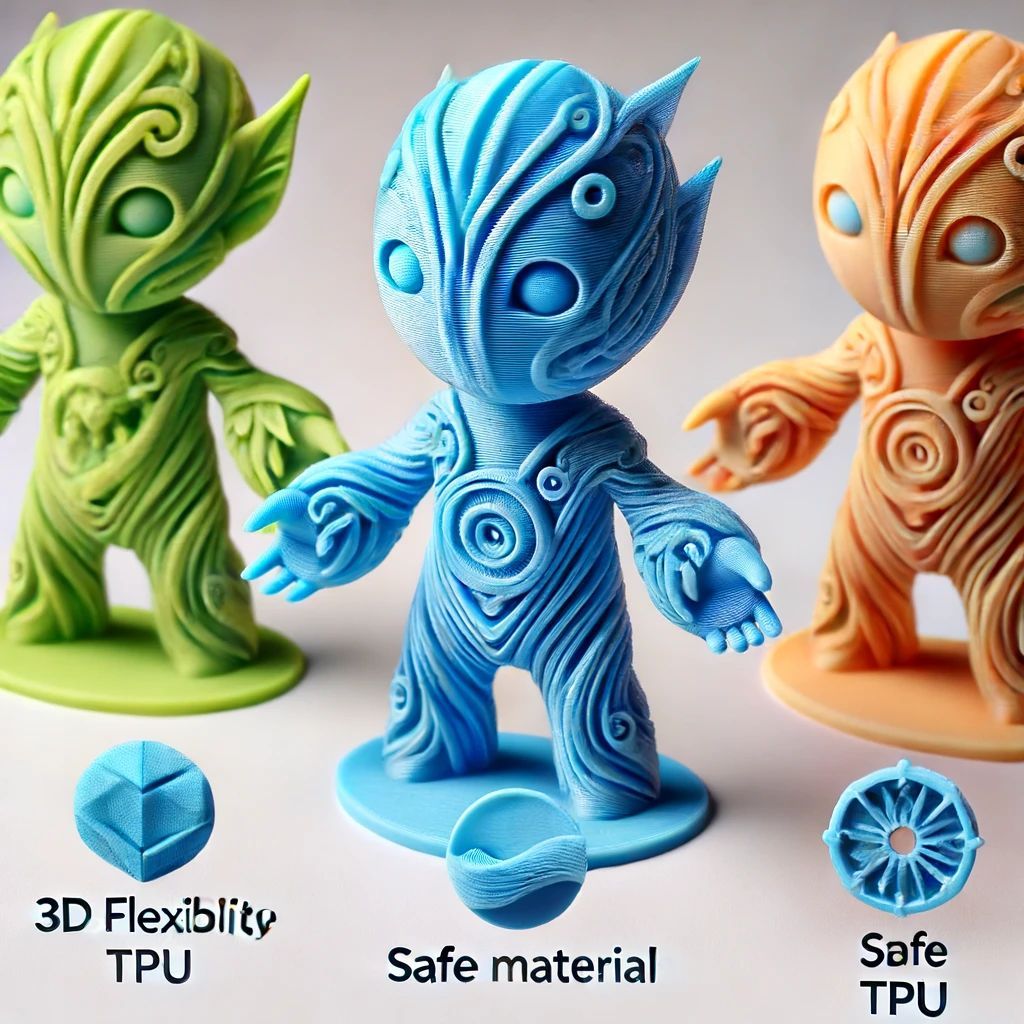Why You Should Use a Reverse Engineering Service
Reverse Engineering Services Explained - What It Is and Why You Should Use It

Reverse engineering is a process of analyzing and understanding how something works, especially with regard to its design, structure, and mechanism. It can be used for all kinds of things ranging from analyzing software, appliances, electronics and even vehicles.
Engineers rely on different techniques to understand the construction and working principles of something they are faced with; some are simple while others are complex. A variety of techniques can be used to reverse engineer an object in order to analyze it precisely.
This article explains what reverse engineering services are, why you should use them, different types of reverse engineering services available and examples of when you might use them in your projects.
What is Reverse Engineering?
Reverse engineering is a process of analyzing and understanding how something works, especially with regard to its design, structure, and mechanism. It can be used for all kinds of things ranging from analyzing software, appliances, electronics and even vehicles. Engineers rely on different techniques to understand the construction and working principles of something they are faced with; some are simple while others are complex.
A variety of techniques can be used to reverse engineer an object in order to analyze it precisely. Reverse engineering has a few different meanings, but it's typically when someone takes something apart and studies it to see how it works. It's also sometimes called "deconstruction," since you're taking something apart to see what's inside.
Reverse engineering is used in a lot of different fields, including engineering, software development, and computer science.
Why Should You Use Reverse Engineering Services?
There might be times when you are working on a project and you need to know how an object works in order to disassemble it and use it in your project. Reverse engineering services can help you understand the working principles of an object and learn how it is constructed, thereby helping you break it into pieces without causing any damage.
If you are working with a team on a project and the client asks you to provide details about how the design works, you can use reverse engineering to find out the technical aspects of it and provide information to the client.
Reverse engineering services can also help you discover and understand the functionality of new software in order to design a system that works in tandem with it. Reverse engineering has many benefits and is a cost-effective and efficient way of understanding how something works.

Types of Reverse Engineering Services
There are different types of reverse engineering services you can hire and a variety of techniques used in each depending on what you need to know about the object. The following are the types of reverse engineering services – - Analytical Dissection - Analytical dissection is a process of breaking down an object into its components, understanding how they are put together, and then putting it back together.
This type of reverse engineering service is used to analyze the structure and design of an object.
- Building Information Modelling - Building information modelling (BIM) is a process of reverse engineering an object to create a 3D model that can be used for analysis and design. BIM is a process used in construction to plan and design building or structure. It can be used to gather details about an existing object, or it can be used to create a design or plan.
- Code Reversing - Code Reversing is the process of deciphering and understanding the code written in programming languages. Code Reversing is used to understand what certain lines of code are doing and how they work. Code Reversing can be used to understand the functionality of an existing software.
- Computer-Aided Design (CAD) - CAD is used to reverse engineer an object in 2D and 3D formats that can be used for drawings and designs. CAD can be used to create precise images of an object, and it can be used to create diagrams and sketches of details.
- Data Extraction - Data extraction is a process of collecting important data from a source or an object. It is commonly used to reverse engineer an existing database for information and details.
- Electrical Dissection - Electrical dissection is the process of cutting an object open and removing the components to find out how it works. Electrical dissection is commonly used to reverse engineer electrical appliances and electrical devices.
- Mechanical Dissection - Mechanical dissection is a process of breaking down an object by cutting it into pieces to find out how it works. Mechanical dissection is commonly used to reverse engineer mechanical appliances and machinery.
- Virtual Reality Modelling - Virtual reality modelling is a process of reverse engineering an object and modelling it in a virtual environment. It is commonly used to analyse a design or an architectural plan and can also be used to understand how an existing product works.
Electronic Devices and Appliances
If you want to create your own electronic device or appliance, you will first have to understand how they are constructed to create your own. Electronic devices and appliances have a variety of components, such as motors, circuit boards, buttons, wires, and switches.
If you want to create your own device, you might need to use reverse engineering to disassemble an existing device, understand how it is constructed, and use the components to build your own.
For example, if you want to create a portable music player, you can reverse engineer a portable music player and then disassemble the device to understand how each part functions so you can use it in your own device.
Software and Code Reversing
As mentioned above, software plays an important part in our lives and we rely on it for a variety of tasks such as booking flights, ordering food, etc. If you want to understand how a software works, you need to reverse engineer the code used in it. Most software developers use programming languages to write codes and instructions that control the software and allow users to access the features of it.
If you want to reverse engineer a software, you need to figure out the code written in the programming language used in the software. By doing so, you will be able to understand how the software works. For example, if you want to know how the YouTube video streaming works, you will have to reverse engineer the software and find out the code written in it.
You can then decipher the code and understand how the software works by breaking down the code line-by-line and word-by-word.

Automated Service Based Reverse Engineering
Automated service based reverse engineering is a type of reverse engineering service that is provided online. If you want to reverse engineer an object but don’t know how to do it or don’t have the skills and resources to do it, you can hire an online reverse engineering service. These online services are available for a fee, and you can upload the image or CAD of the object you want to reverse engineer and get the results within a few hours/days. Some automated reverse engineering services also allow you to provide the code of the software you want to reverse engineer, and they will provide you with the results.
When you should use reverse engineering services
You are working on a project, and you need to know the details of an existing product to create a similar one. For example, you want to create a streaming device similar to the ones being used by YouTube. In this case, you need to reverse engineer the YouTube device and understand how it works so you can create your own device with similar features.
You have received an assignment to design a product, but you don’t know the technical details of it. For example, you have been asked to design a car, but you don’t know how cars work. In this case, you can use reverse engineering to understand how a car works and then design your own product.
When you should not use reverse engineering services
You want to create a product that is completely different from an existing product. For example, you want to create an automated swimming pool cleaner, but you want it to work in a different way than the existing ones. In this case, you don’t need to reverse engineer an existing product to understand how it works because your product will be completely different from the existing ones. You are working on a project, but you don’t have access to an object or product.
For example, you want to design a product for a company, but the company wants you to sign a non-disclosure agreement (NDA) and not share any details about the product. In this case, you will not be able to reverse engineer the product and understand how it works because you don’t have the product and you can’t be allowed to see it.
Example 3: What are the steps in reverse engineering?
Reverse engineering can be done for two reasons: to understand how a product works and to create a product that is similar to an existing one. In either case, you need to follow the same steps.
Step 1: Understand the product’s structure and system. Reverse engineers usually have an idea about how things work and what they are made of, but they still need to understand the structure of the product and its system. They need to understand what parts it has and what they do.
They also need to know which parts are important and which ones aren’t.
To do this, reverse engineers usually use visual inspection, x-ray analysis, or dissection (in case of mechanical products).
In some cases, such as when you have access only to part of a product or when you don’t want to destroy it by using destructive techniques like dissection or x-ray analysis, reverse engineers use non-destructive techniques like computer tomography (CT) scans and magnetic resonance imaging (MRI) scans.
When reverse engineers don’t have access to the real thing or want more information about it without destroying it, they use non-destructive techniques like CT and MRI scans instead of destructive ones like dissection or x-ray analysis.
Step 2: Create a functional model of the system. Once reverse engineers understand how a product works internally, they create a functional model of the product’s system. In other words, they create a model of how the product would work if it were assembled and working properly.
They do this by studying the product’s schematics, manuals, and blueprints and by using non-destructive techniques like CT scans or MRI scans to gather information about its internal parts.
Step 3: Determine what components can be replicated. Reverse engineers typically determine what components of a product can be replicated by determining which of its components are unique or hard to replicate. To do this, reverse engineers study the way that the unique parts are made (which is often different from the way ordinary parts are made) and determine whether or not it would be possible to make them in a different way.
Step 4: Create a new design for each component that can be replicated. After reverse engineers have determined which components of a product can be replicated, they create new designs for those components in their functional model of the product’s system. These new designs must have similar external shapes as their counterparts in the real product but must use different materials and/or production processes so that they don’t infringe on any patents held by other companies (as is often done with fake designer handbags).
Step 5: Create an assembly plan for creating replicas of each component that can be replicated. Reverse engineers also create assembly plans for creating replicas of each component that can be replicated in their functional model of the system so that they know how many workers will be necessary for the assembly process.
Step 6: Create a production plan for creating replicas of each component that can be replicated. After reverse engineers have created an assembly plan, they then create a production plan for creating replicas of each component that can be replicated in their functional model of the system so that they know what materials and machinery they will need to produce their product.
Step 7: Produce and sell replicas of each component that can be replicated. Finally, once reverse engineers have created a functional model of the system, designed new components, and created an assembly and production plan, they produce and sell replicas of each component that can be replicated in their model system.
Reverse engineering is used extensively in the fashion industry because it allows companies to copy high-end designer clothing without infringing on any patents held by other companies. It is also used extensively by electronics companies to copy competitors’ products by reverse engineering them so that they can determine how customers use them (and thus how best to market improved versions).












